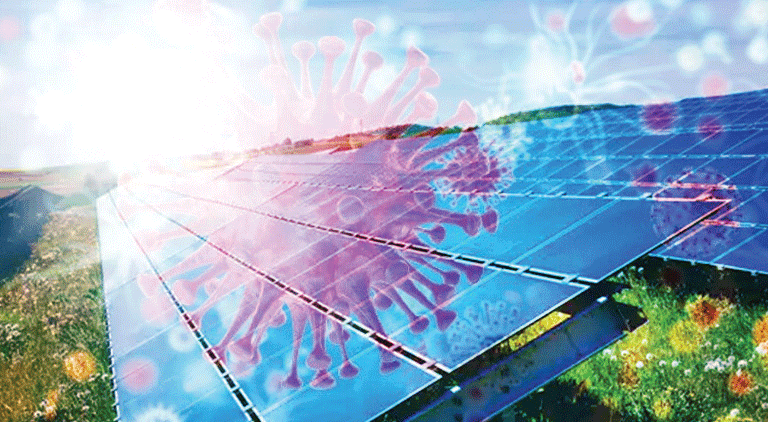COVID-19 shutdown led to increased solar power output: MIT research
By EPR Magazine Editorial August 10, 2020 12:04 pm IST
By EPR Magazine Editorial August 10, 2020 12:04 pm IST

As the air cleared after lockdowns, solar installations in Delhi produced 8 percent more power, study shows.
As the COVID-19 shutdowns and stay-athome orders brought much of the world’s travel and commerce to a standstill, people around the world started noticing clearer skies as a result of lower levels of air pollution. Now, researchers have been able to demonstrate that those clearer skies had a measurable impact on the output from solar photovoltaic panels, leading to a more than 8 percent increase in the power output from installations in Delhi.
While such an improved output was not unexpected, the researchers say this is the first study to demonstrate and quantify the impact of the reduced air pollution on solar output. The effect should apply to solar installations worldwide, but would normally be very difficult to measure against a background of natural variations in solar panel output caused by everything from clouds to dust on the panels. The extraordinary conditions triggered by the pandemic, with its sudden cessation of normal activities, combined with high-quality air-pollution data from one of the world’s smoggiest cities, afforded the opportunity to harness data from an unprecedented, unplanned natural experiment.
The findings are reported in the journal Joule, in a paper by MIT professor of mechanical engineering Tonio Buonassisi, research scientist Ian Marius Peters, and three others in Singapore and Germany.
The study was an extension of previous research the team has been conducting in Delhi for several years. The impetus for the work came after an unusual weather pattern in 2013 swept a concentrated plume of smoke from forest fires in Indonesia across a vast swath of Indonesia, Malaysia, and Singapore, where Peters, who had just arrived in the region, found “it was so bad that you couldn’t see the buildings on the other side of the street.”
Since he was already doing research on solar photovoltaics, Peters decided to investigate what effects the air pollution was having on solar panel output. The team had good long-term data on both solar panel output and solar insolation, gathered at the same time by monitoring stations set up adjacent to the solar installations. They saw that during the 18-day-long haze event, the performance of some types of solar panels decreased, while others stayed the same or increased slightly. That distinction proved useful in teasing apart the effects of pollution from other variables that could be at play, such as weather conditions.
Peters later learned that a high-quality, years-long record of actual measurements of fine particulate air pollution (particles less than 2.5 micrometers in size) had been collected every hour, year after year, at the U.S. Embassy in Delhi. That provided the necessary baseline for determining the actual effects of pollution on solar panel output; the researchers compared the air pollution data from the embassy with meteorological data on cloudiness and the solar irradiation data from the sensors.
They identified a roughly 10 percent overall reduction in output from the solar installations in Delhi because of pollution – enough to make a significant dent in the facilities’ financial projections.
To see how the COVID-19 shutdowns had affected the situation, they were able to use the mathematical tools they had developed, along with the embassy’s ongoing data collection, to see the impact of reductions in travel and factory operations. They compared the data from before and after India went into mandatory lockdown on March 24, and also compared this with data from the previous three years.
Pollution levels were down by about 50 percent after the shutdown, they found. As a result, the total output from the solar panels was increased by 8.3 percent in late March, and by 5.9 percent in April, they calculated.
Authored by:We use cookies to personalize your experience. By continuing to visit this website you agree to our Terms & Conditions, Privacy Policy and Cookie Policy.